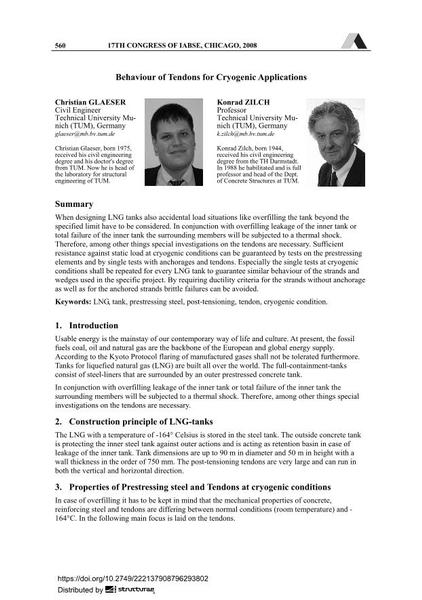Behaviour of Tendons for Cryogenic Applications

|
|
|||||||||||
Bibliographic Details
| Author(s): |
Christian Gläser
Konrad Zilch |
||||
|---|---|---|---|---|---|
| Medium: | conference paper | ||||
| Language(s): | English | ||||
| Conference: | 17th IABSE Congress: Creating and Renewing Urban Structures – Tall Buildings, Bridges and Infrastructure, Chicago, USA, 17-19 September 2008 | ||||
| Published in: | IABSE Congress Chicago 2008 | ||||
|
|||||
| Page(s): | 560-561 | ||||
| Total no. of pages: | 8 | ||||
| Year: | 2008 | ||||
| DOI: | 10.2749/222137908796293802 | ||||
| Abstract: |
When designing LNG tanks also accidental load situations like overfilling the tank beyond the specified limit have to be considered. In conjunction with overfilling leakage of the inner tank or total failure of the inner tank the surrounding members will be subjected to a thermal shock. Therefore, among other things special investigations on the tendons are necessary. Sufficient resistance against static load at cryogenic conditions can be guaranteed by tests on the prestressing elements and by single tests with anchorages and tendons. Especially the single tests at cryogenic conditions shall be repeated for every LNG tank to guarantee similar behaviour of the strands and wedges used in the specific project. By requiring ductility criteria for the strands without anchorage as well as for the anchored strands brittle failures can be avoided. |
||||
| Keywords: |
tendon prestressing steel post-tensioning LNG Tank cryogenic condition
|
||||
